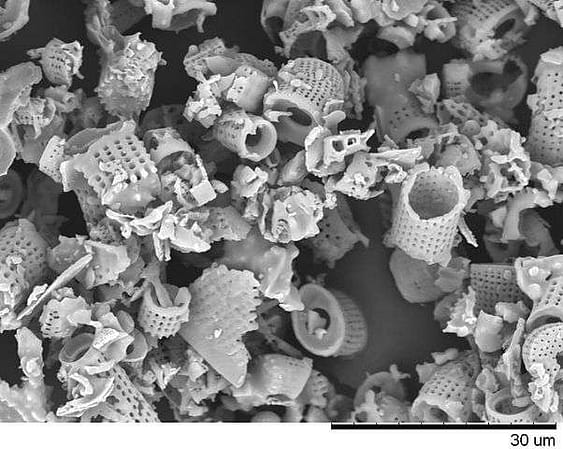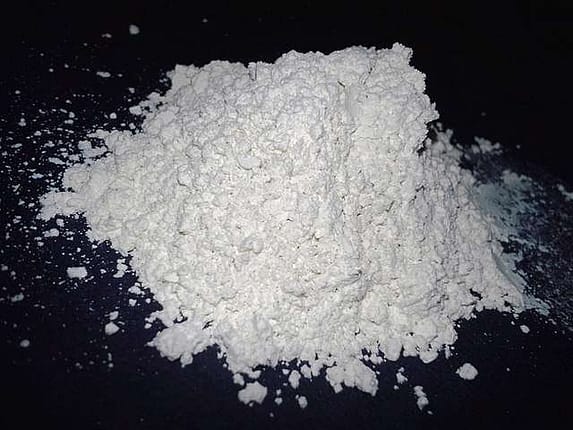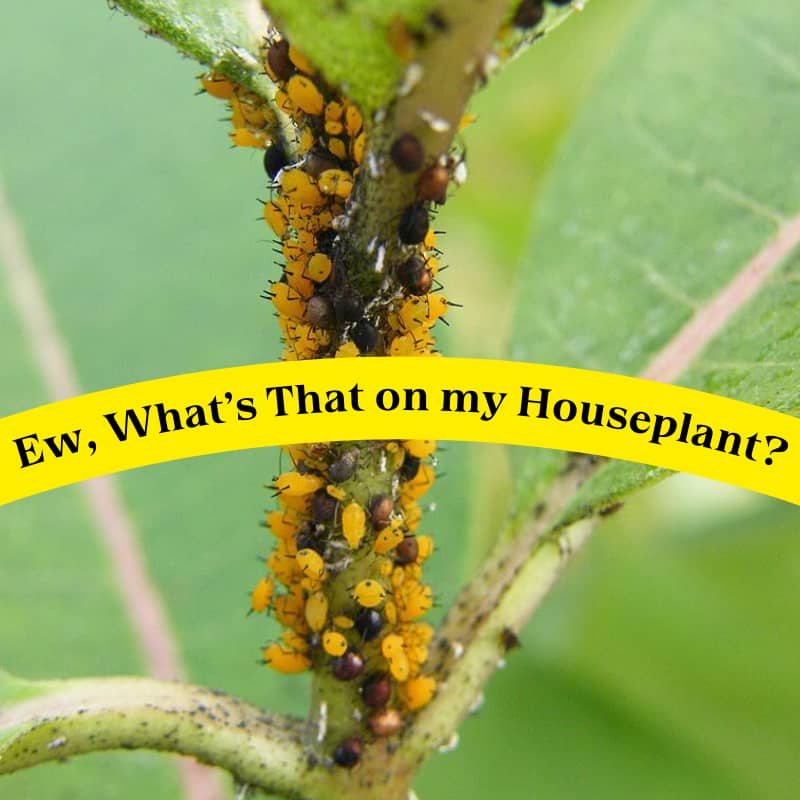This post may contain affiliate links. As an Amazon Associate we earn from qualifying purchases.
If you hang around the gardening groups on Facebook and Instagram you’ll read about diatomaceous earth (DE) as a pesticide. Invariably, someone always pipes up to enquire as to what this wonder-substance is.
Today we take a deep dive into that topic and try to separate the facts from the fiction.
What is diatomaceous earth?
When you run your fingers through a handful of diatomaceous earth you are touching the fossilized remains of diatoms.
Diatoms, by the way, make up a huge group of single-celled algae in various genera, that live in the soil, waterways and oceans across the globe.
Living diatoms provide roughly 20% of the oxygen we breathe as a result of “…photosynthesis by marine diatoms — the most important little organisms that most people have never heard of,” according to Andrew Alverson, a biologist at the University of Arkansas at Fayetteville.
The skeletons of dead diatoms are made of silica, of which silicon is a component and “… the second most prevalent element [on earth] after oxygen,” said K R Martin, at the U.S. Department of Health and Human Services Pubmed website.
To put it in a way that we can all wrap our heads around, “Diatoms are algae that live in houses made of glass,” according to the experts at diatoms.org.
How are diatoms transformed into diatomaceous earth?
As of 2019, in the U.S. “… six companies produced diatomite at 12 mining areas and 9 processing facilities in California, Nevada, Oregon, and Washington,” according to the experts with the U.S. Geological Survey. Sixty percent of this is used in filtration products, they conclude.
The United States Environmental Protection Agency says that diatomite is mined via open pit, “… normally using some combination of bulldozers, scraper-carriers, power shovels, and trucks to remove overburden and the crude material.”
The diatomite is then crushed and dried. From there, further treatment depends on where the dried, crushed diatomite is headed. For filters, for instance, the particle size needs to be further reduced via the use of a fluxing agent.
Whew! My brain is in overload. Let’s move on.
How is diatomaceous earth used in the garden?
The first pesticide products containing diatomaceous earth were registered in 1960 to kill insects and mites.
It does the dirty deed by drying out the creepy crawlies’ exoskeleton (the silica does that), and then, possibly, with its sharp, glass-like structure.
Diatomaceous earth for fleas
There is much disinformation among gardeners about what exactly, the powder will kill. Fleas, for instance. Based on evaluations performed by Texas AgriLife Extension, DE is ineffective against fleas outdoors. The dust is, however, good at killing flea larvae, in dry environments, such as indoors in the pet’s bedding.
Diatomaceous earth for ants
Diatomaceous earth is ideal for killing ants, although it does take a few days. The ants stroll through the powder and the DE sticks to them. They will then carry it back to the nest and shared with everyone else (pity, right?).
Diatomaceous earth for bedbugs
DE is recommended as part of a “cocktail” of methods to rid your home of bedbugs. This includes modifying your environment, non-chemical controls, insecticide and more. If you are having problems with bedbugs, please visit Rutgers Universty’s website to read more about controlling them.
Diatomaceous earth for other pests
Use DE to kill cockroaches, millipedes, silverfish, centipedes, crickets and more.
Remember, when it comes to controlling pests, don’t use food-grade DE.
The advantages of using diatomaceous earth in the garden
- Diatomaceous earth is organic.
- DE is effective against the more common garden pests, such as aphids, beetles, ants, cockroaches, flies and mites.
- DE is kinder for the environment than chemical pesticides.
- DE can be applied to edible plants.
- Insects don’t become immune to diatomaceous earth.
- Diatomaceous earth is fast-acting, typically within 48 hours.
The disadvantages of DE in the garden
- Diatomaceous earth doesn’t work well when it gets wet, so you’ll need to reapply after irrigation and/or rain.
- DE doesn’t discriminate and will kill beneficial garden creatures, such as ladybugs, mantids, lacewings, butterflies and bees, as well as bad ones.
- You will need to be mindful of keeping kids and pets out of the garden while you are applying DE.
- You’ll also need to wear protective clothing, eye protection and a dust mask.
The biggest myth about diatomaceous earth in the garden
“Always use food-grade diatomaceous earth,” Bob Gilbert, HomesandGardens.com.
“Garden-grade diatomaceous earth is the same as pool-grade, used to filter the water in swimming pools,” is something else I hear a lot.
Neither is true.
Pool filters use calcined DE, which means it’s been heated to between 600 degrees F to 1000 degrees.
Garden-grade is milled or micronized until it is very fine. In fact, it must not be calcinated to be effective as an insecticide.
Despite what too many garden bloggers claim, food-grade DE is not registered for garden use and has not been tested for “… pest control-related risks,” according to the EPA.
If you decide to use DE in the garden, read the label before purchasing. Ensure that it:
- Clearly states instructions for pest control. In other words, it lists the amount to use, how to use it and where.
- Includes a list of precautions, such as wearing a dust mask, eye protection and more.
- Contains an EPA registration number
- States that the product will “… kill, repel or help get rid of …” specified pests. (National Pesticide Information Center)
I cannot count the number of times I have read a response to the questions about food-grade diatomaceous earth that claims it is perfectly safe to use in the garden.
It may not be. Don’t be fooled by the words “food-safe.” Learn more in this YouTube video from the National Pesticide Information Center.
Garden-safe DE brands
This brilliant list comes courtesy of Clemson University, College of Agriculture, Forestry and Life Sciences. Click on the name to shop.
- Bonide Diatomaceous Earth Crawling Insect Killer
- Garden Safe Crawling Insect Killer Diatomaceous Earth
- Harris Diatomaceous Earth Crawling Insect Killer
- Safer Brand Ant & Crawling Insect Killer
You’ll need a bulb duster to apply DE in a thin, but wide layer. We found ours at Amazon.com. “Fill the container no more than half full, and then use a squeezing, “poofing” motion to dispense a thin layer of dust in areas where pests are found or may be hiding,” suggests the experts at the University of California.
BONUS! Watch DE take on a huge fire ant mound.
Warning: He isn’t wearing protection. See all that dust? He is breathing that in. Don’t be like him … wear a mask!
Soon we’ll introduce you to an effective bio-pesticide, Bacillus thuringiensis. Check back soon!






